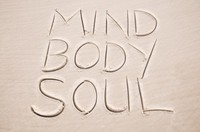Definitions of Hate:
Repulsion
Intense dislike
Disliking an unappealing object
The desire to eliminate the “enemy”
Eliminating the “other”
Origin of Hate:
Hate is the opposite of love; it is a deep and passionate emotion that is essentially destructive. A convenient excuse for dysfunction, ineffectiveness and misfortune, hate assigns blame to the vulnerable. The need to protect self-esteem, reduce fears and strengthen bond underlies denigration of a particular individual or group without a rational or moral basis. Hate is when an enemy is created to preserve pride and avoid reflection or improvement. For those who hate, it is too much work to try to understand another point of view.
The Psychopathology of Hate:
A basic human survival instinct is the ability to assess for danger and separate friend from foe. People are programmed to be on high alert when danger is advancing because mistaking an enemy for a friend can result in loss of life. Those primitive defenses are mitigated by communication, corrective thinking and empathy. Yet, many of those early precautionary impulses of danger linger.
According to John Schafer, Ph.D. behavioral analyst for the FBI, most people who are hostile are highly insecure. He further qualifies, “not all insecure people are haters but all haters are insecure.” Hate camouflages lack of self-esteem and prevents exposure of personal insecurities. Schafer describes the formation and stages of how hate develops among the masses and replaces purposeful existence with self perpetuating destruction.
Angry People Love Company:
To further bury their emotional/psychological lacking, people who hate gather in a crowd and validate each other by projecting their void unto a mutual “target”. This way, any bitterness and disappointment they have about their lack of self-worth is deflected unto the object of animosity.
The Group Forms an Identity:
Almost like a cult, those who hate, assign symbols, rituals and rhetoric, disparaging their target of hate while enhancing their sense of importance. They form a camaraderie using various greetings, defining clothing and secret codes. Due to their feeling of insignificance outside of their cause, they are willing to sacrifice their life for the cause – the ultimate sense of worthiness in their eyes.
Hate Groups Leave Their Mark:
Verbal denigration and dehumanization of the victim leads to aggressive behavior and this negativity becomes the glue that 1) bonds group members 2) increases agitation 3) avoids taking responsibility for oneself or actualizing one’s own potential.
Hate Escalates to Attack:
When hate turns physical, the members become violently aggressive and seek weak victims as easy targets. Haters lose their sense of morality and are fed by “adrenaline” provided by each attack. The more the “rush” or “high”, the greater the desperation for more action; thus, the cycle of violence continues.
Use of Weapons:
Often the attacker will use objects that are hands-on such as knives, hatchets, tools and such that bring the attacker and victim in close range. This results in a sense of dominance and power.
Destroying the Enemy:
Distorted thinking and clouded judgment gives “permission” to the attacker to kill. Healthy strengths such as empathy and compassion are replaced with evil and hostility as the perpetrators deny that they committed the crime. The attackers self pity and consider themselves victims - they cry out for help to the world. They justify their actions, vilify their victims and refuse to acknowledge the enormity of their malice but rather are intent on eradicating the “subhuman” target. The more the brutality towards the victim, the less guilt the haters feel.
Widespread Application:
No one is immune to the viciousness of hate. Schafer gives the example of a co-worker who for various reasons becomes a hate target. The hater rallies a group of colleagues and convinces them to dislike the target. In the beginning it is benign; a lifted eyebrow, exclusions from meetings, lunches and other isolating factors. Hater finds fictitious flaws in the victim’s work and criticizes the co-worker repeatedly. The abuse intensifies to insulting remarks and open vilification against the co-worker.
Eventually the haters physically move the co-worker’s desk, deface their belongings, remove responsibility, deny upward mobility, sabotage the co-worker’s projects and attempt to ruin the person’s reputation through slanderous rumors and innuendos.
Scenarios such as this are typical among friends and family as well. These kinds of stories occur every day across America and anywhere around the world.
Emotional Ammunition:
Torah teaches us that hatred is the source of all negative character traits. Narcissism (Yeshus) is the pre-occupation of self to the exclusion of otherness; when left uncontrolled, it can result in destruction of individuals, families and communities.
- When we expand our minds to welcome the existence of others, despite their disparity, we have the capacity to accomplish a type of unity that brings virtue to ourselves and to those we influence.
- Divisiveness can eventually lead to roadblocks that prevent holy endeavors. We are all obligated to eradicate baseless hatred / envy which is defined as the inability to accept others due to competitiveness and fear of annihilation.
- Be a warrior against baseless hatred by defending the innocence of the soul and perceiving goodness beneath contention.
- Self Appraisal - Analyze the people who you feel animosity towards and realize the ability to love every being just as we have ability to love G-d.
- Carve out space for differences, withhold judgment and you will experience a sense of peace.
- Incorrect and primitive thinking is due to stress and fear. By trusting the One Above, it is possible to live in a world of uncertainty.

 Previous
Previous

